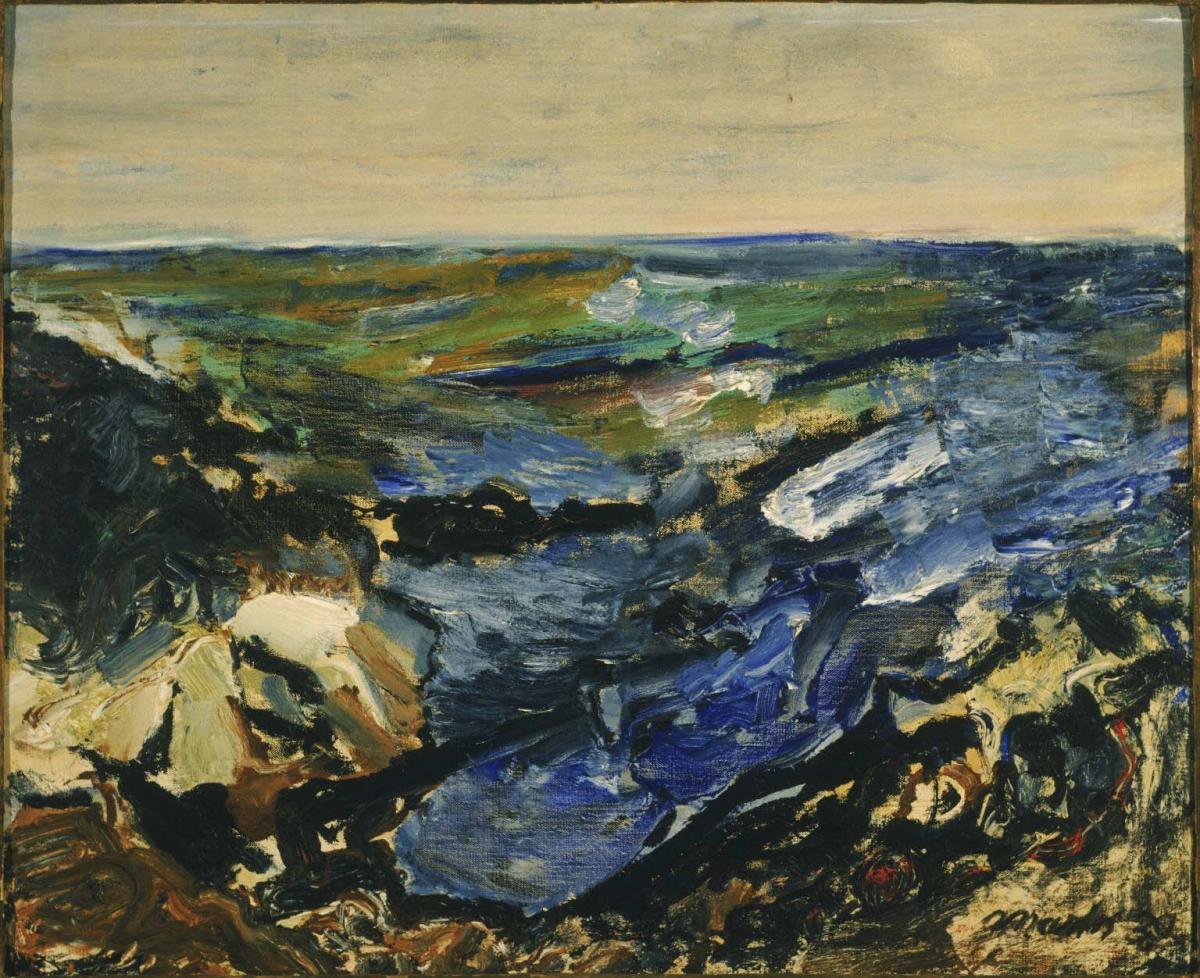The Sea, Cape Split, Maine
John Marin ( 1939 )

After establishing himself in the 1920s as the world’s foremost watercolorist, John Marin begin painting in oil in the 1930s, finding a vitality in the medium that he experienced in his earlier works. The Sea, Cape Split, Maine, painted in 1939, reveals Marin’s renowned ability to capture his immediate impression of a powerful seascape along the rocky Maine coast. The sea had become an essential part of Marin’s work by the time he settled in Cape Split in the mid-1930s. “Portraying the sea in all of its moods—calm or violent, gray or filled with color, luminous or leaden—he created an extraordinary record of what must be one of the most beautiful places in the world.”
The mood of the picture connects it to the heroic ruggedness found in the paintings of Winslow Homer, while the physicality of Marin’s impasto is quite singular in American painting. Unlike his colleagues Arthur Dove, Marsden Hartley, and Georgia O’Keeffe, Marin did not engage in overtly spiritual symbolism even while attempting to visualize the underlying forces of nature. Instead, Marin was more interested in assessing nature’s structure in his work. In The Sea, Cape Split, Maine Marin’s brushwork, for example, takes on the character of the subject as the artist creates sequences of movement that lead the eye through the image, expressing the dynamic surging of the sea against the rocky coast.